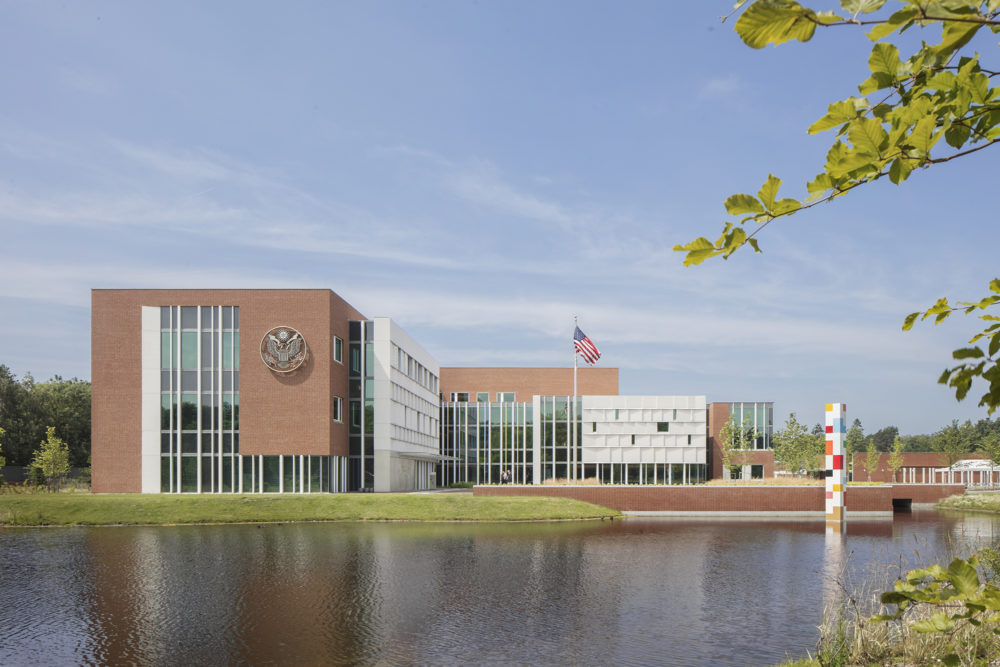
United States Embassy, The Hague: Landscape Design
The Hague, Netherlands
 Sasaki
Sasaki
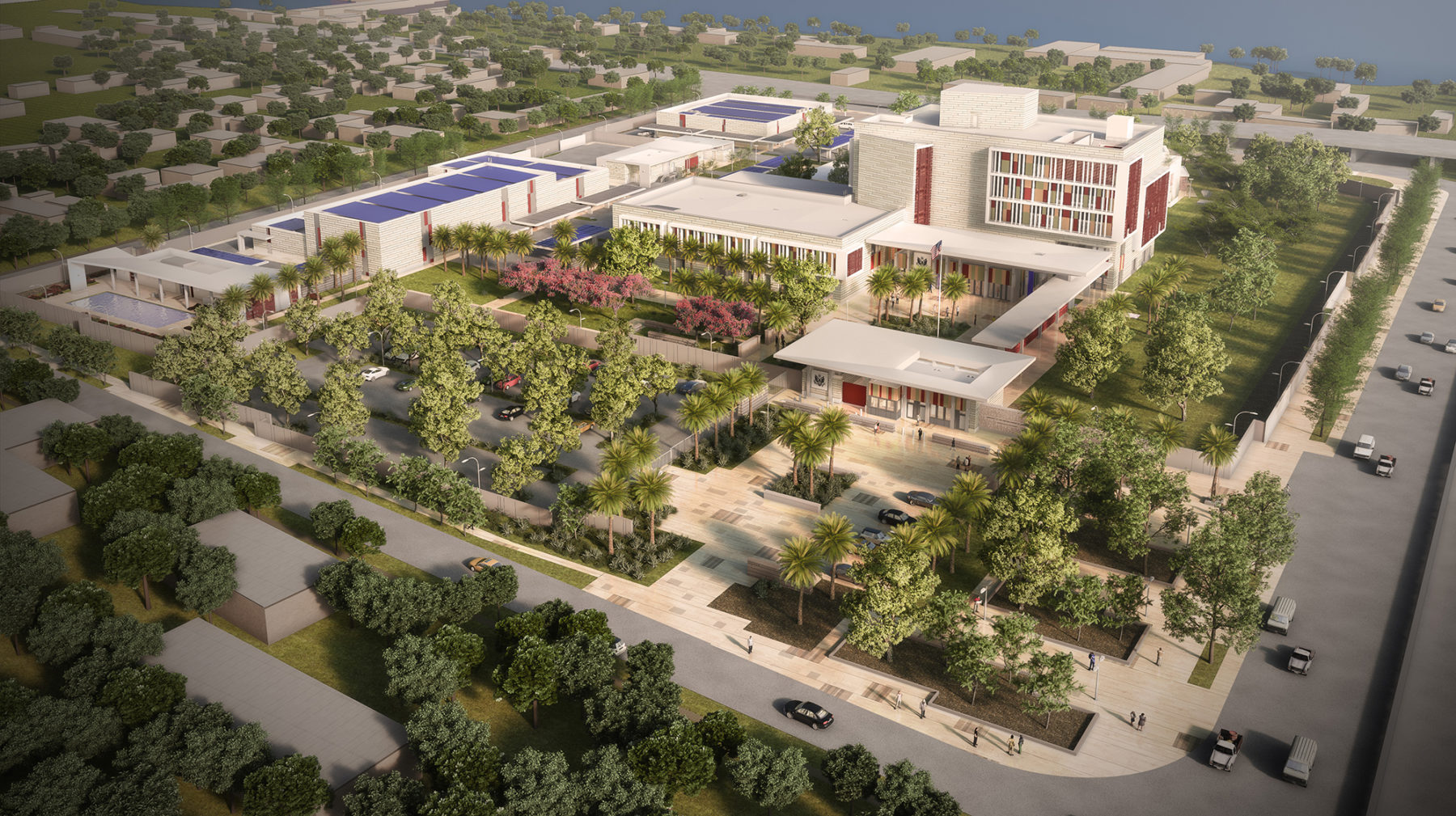
The New Embassy Campus in N’Djamena, Chad, Africa is sited on a 13-acre site near the Chari River and is comprised of a Chancery, Marine Security Guard Quarters (MSGQ), Cabana, and four support buildings.
The site plan is organized in zones to help separate service and support buildings, forming a buffer on the east. The principal 2/3 of the site is developed as a sustainable “Sahel” landscape in which the main campus buildings are set. The Chancery and MSGQ architecture frame “Oasis” gardens for more frequent habitation. The gardens in turn temper the immediate outside environment, providing the relief of shade, greenery, and water to the views from the buildings’ interiors.
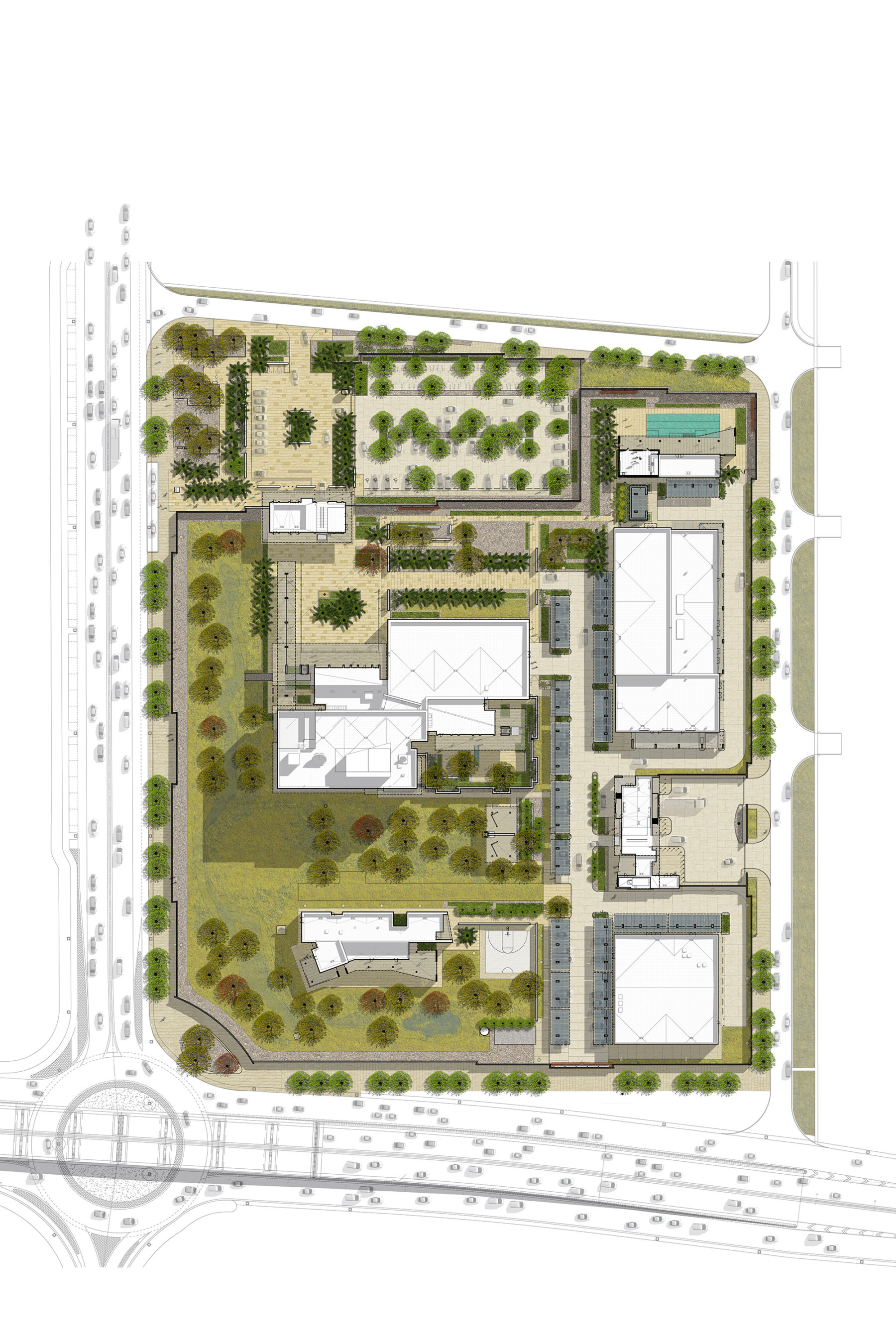
Site Plan
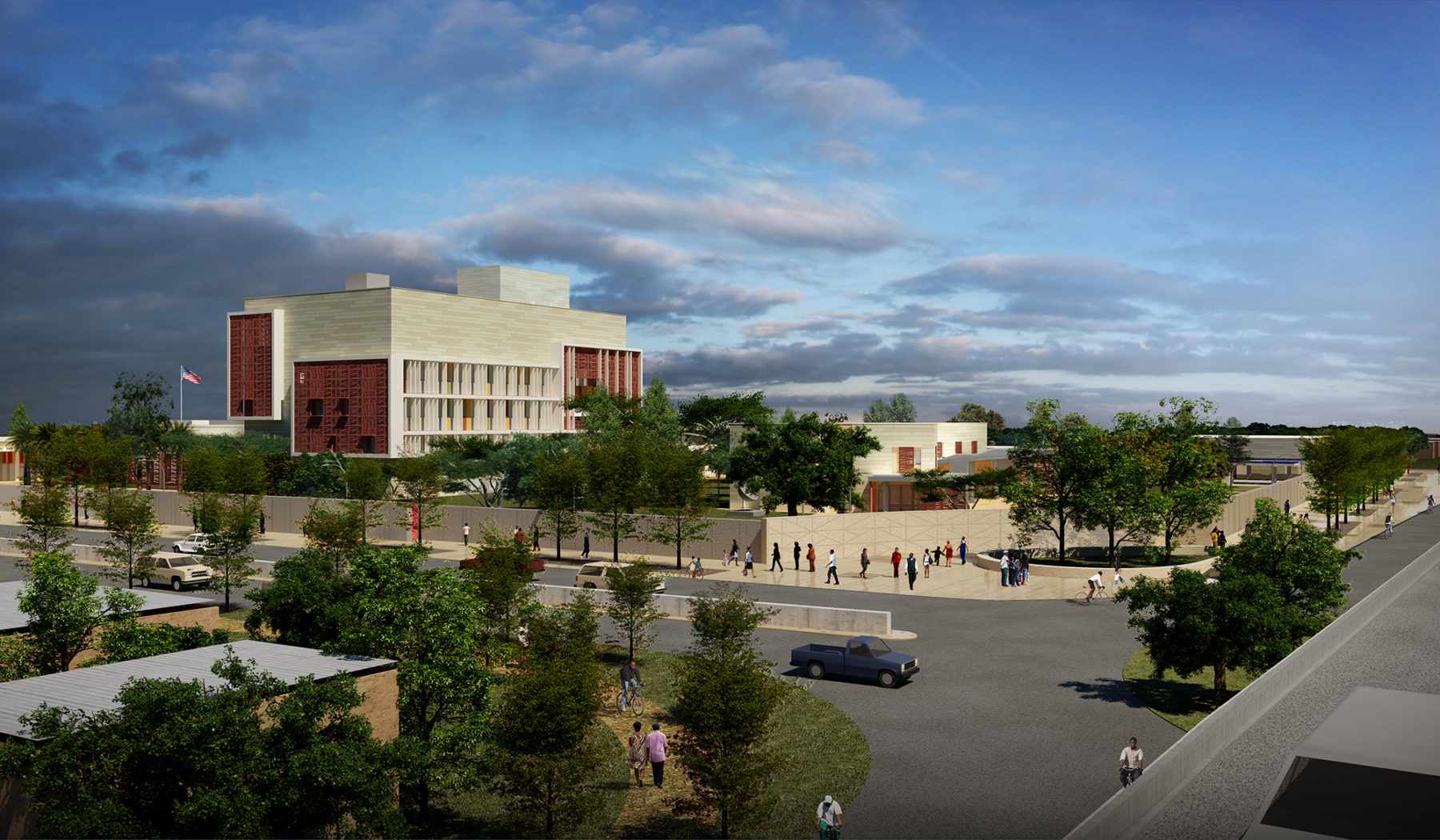
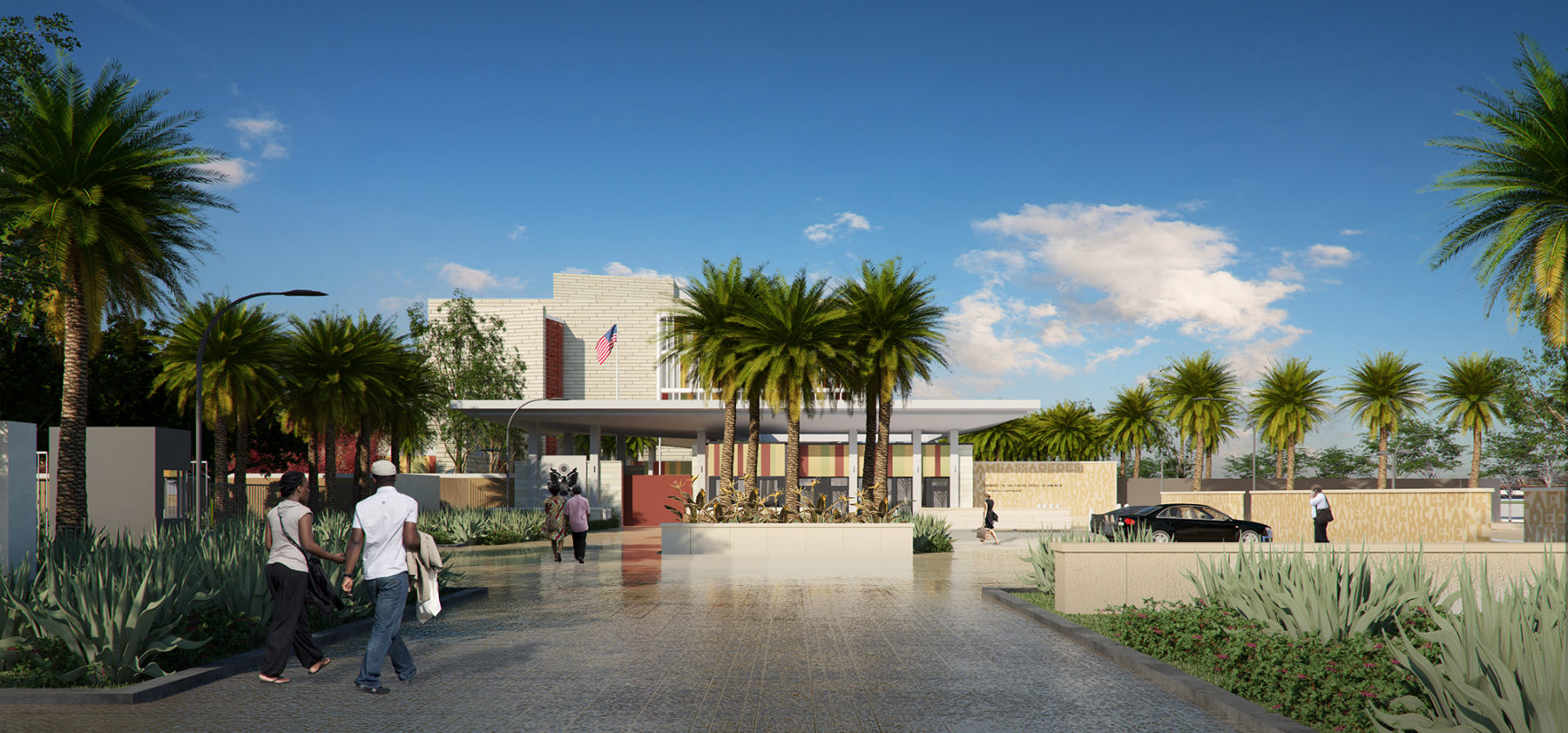
Exterior architectural walls are a concrete construction with an outer layer of rainscreen paneling. The paneling is composed of thin-walled fibrous concrete mounted to a metal substructure. The limited material palette is intended to create a dignified and calm aesthetic, using a readily available, pragmatic system for shipping and assembly. Colors and surface textures of the panels provide scale and detail. The network of free-standing and building-mounted canopies mediate between building mass and surrounding landscape spaces. Canopies over the Lobby and Café are configured to collect rainwater to spill into rain gardens below. An architecturally expressive layer of horizontal and vertical sun controls will protect the interiors from direct sunlight and heat gain.
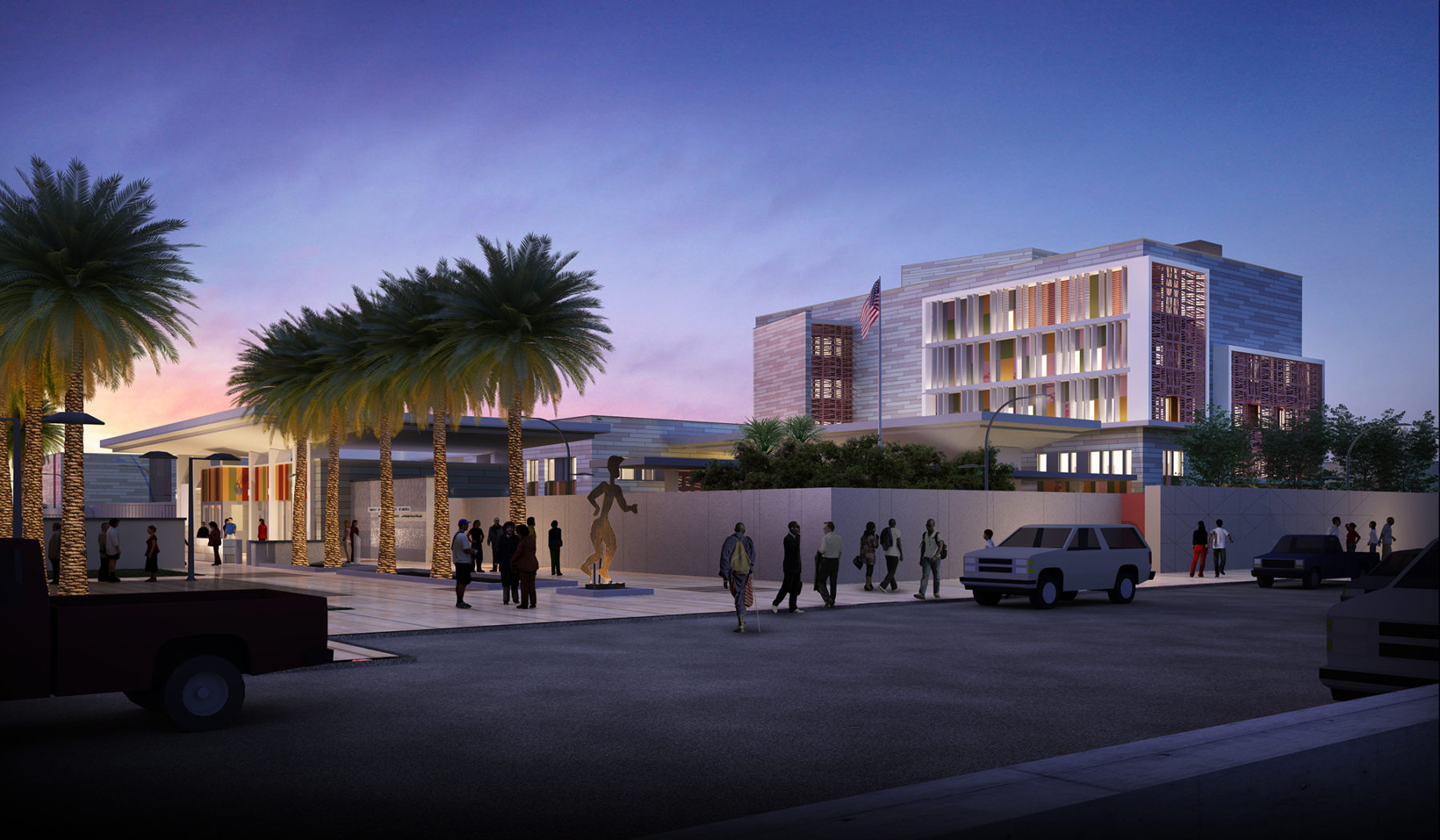
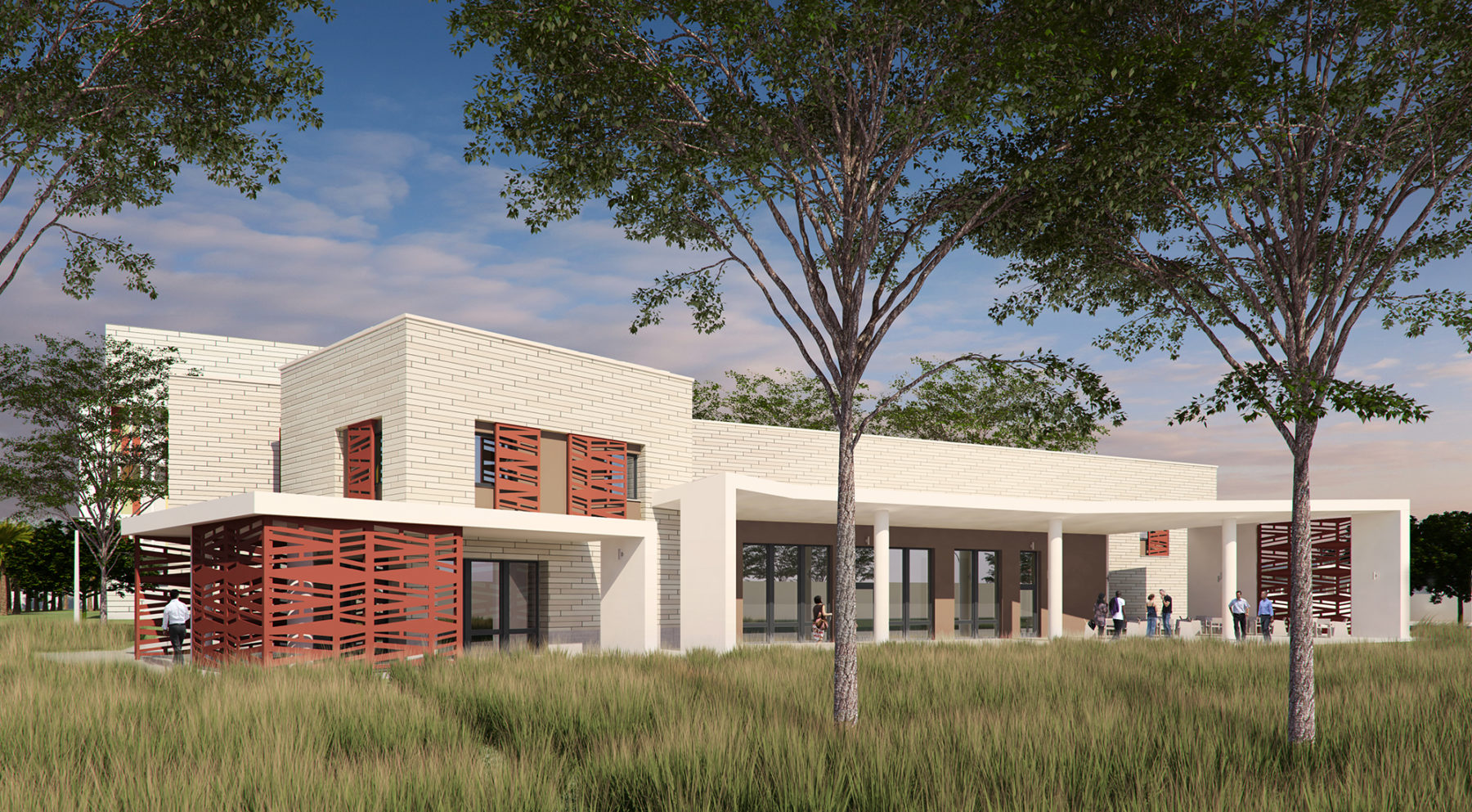
Both the project type and location pose various design challenges. However, the design evolved from goals to develop a sustainable project with future flexibility, durable integrated systems and low operating costs, and provide economic approaches to construction in a remote region where skilled labor is in short supply. With photovoltaic panels on building and canopy roofs and a central utility building providing full on-site power generation, the campus is “off the grid”. Other sustainable initiatives include earth tubes, wastewater effluent reuse, and constructed wetlands.
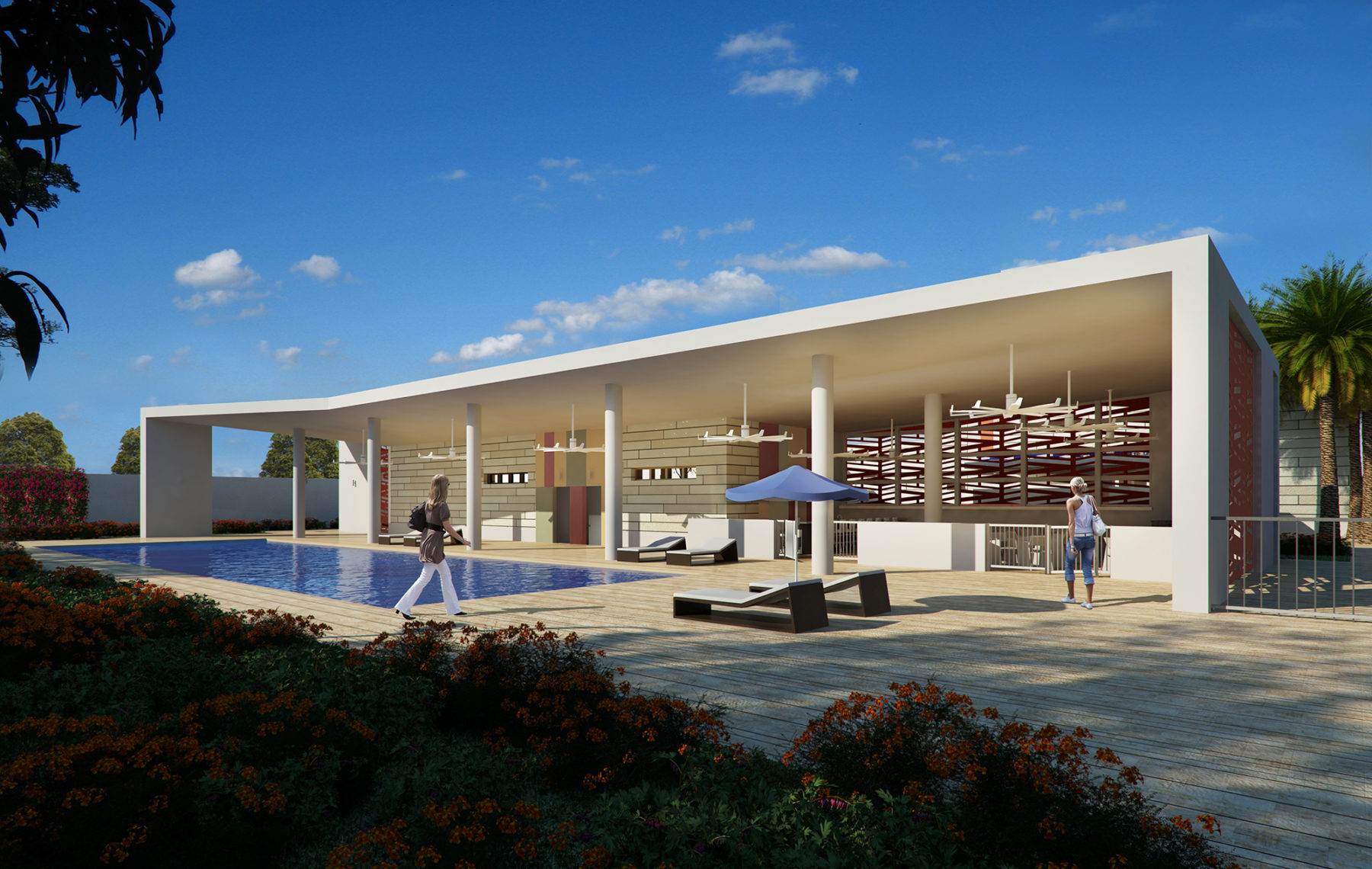
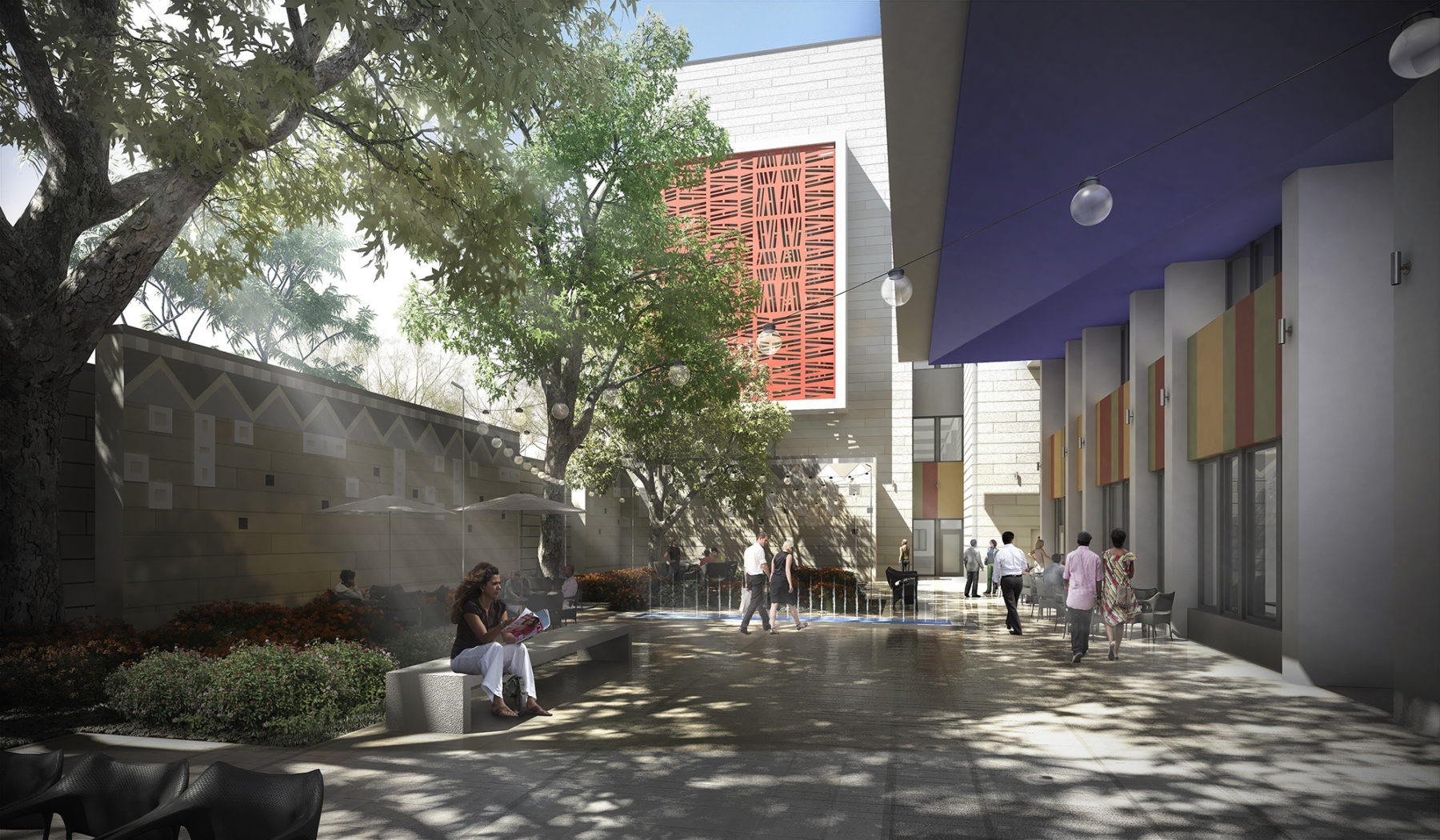
For more information contact Alan Ward or Steve Walz.